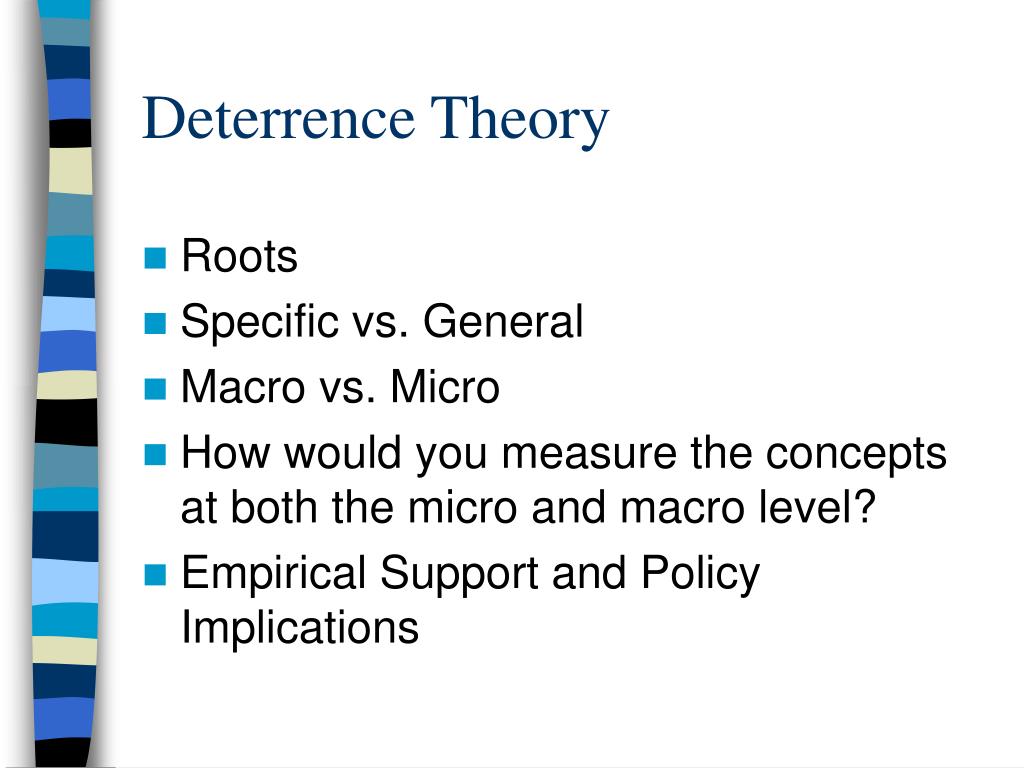

Deterrence has been widely used below the nuclear level but with very uneven results.ĭeterrence has been intensively studied and tested as to its use in terms of strategy in international relations, the maintenance of stability in international relations, the conduct of violence and warfare in both international and domestic contexts, and in political affairs. The greatest success has been that no nuclear weapons have been used for destructive purposes since the end of World War II in 1945. With regard to the presence of nuclear weapons in particular but also to deal with non-nuclear violent conflict, deterrence has been employed to prevent (or at least limit) the destruction of states, societies, and ultimately humanity. Elevated to prominence after World War II and the arrival of nuclear weapons, deterrence became the central recourse for sustaining international and internal security and stability among and within states in an era of serious conflict. American Law and Economics Review 5: 377–411.Deterrence is an old practice, readily defined and described, widely employed but unevenly effective and of questionable reliability. Justifying Imprisonment: On the Optimality of Excessively Costly Punishment. Journal of Economic Literature 57: 329–384. Journal of Political Economy 78: 526–536. International Review of Law and Economics 12: 345–355. American Law and Economics Review 2: 223–237. The Fairness of Sanctions: Some Implications for Optimal Enforcement Policy. A Note on Optimal Fines When Wealth Varies Among Individuals. The Optimal Use of Fines and Imprisonment. Berkeley: University of California Press. International Review of Law and Economics 11: 3–10. Optimal Criminal Procedure: Fairness and Deterrence. Journal of Law, Economics, and Organization 6: 189–201. Optimal Prosecution of Defendants Whose Guilt Is Uncertain. Avoidance, Screening and Optimum Enforcement. Journal of Political Economy 95: 1307–1316. Should the Wealthy Be Able to ‘Buy Justice’. The Social Value of Crime? International Review of Law and Economics 10: 271–284. International Review of Law and Economics 17: 179–192. Incentive Compatibility Constraints as an Explanation for the Use of Prison Sentences Instead of Fines. Bad Acts and Guilty Minds: Conundrums of the Criminal Law. Punishment and Responsibility: Essays in the Philosophy of Law. Journal of Political Economy 78: 165–174. Law’s Order: What Economics Has to Do with the Law and Why It Matters. Columbia Law Review 84: 1523–1560.įriedman, David. Oliver Wendell Holmes: A Life in War, Law, and Ideas. Cambridge: Cambridge University Press.īudiansky, Stephen. The Reason of Rules: Constitutional Political Economy. New York: Oxford University Press.īrennan, Geoffrey, and James Buchanan.

An Introduction to the Principles of Morals and Legislation. Journal of Political Economy 76: 169–217.īentham, Jeremy. Crime and Punishment: An Economic Approach. Indianapolis: Hackett Publishing Company.īecker, Gary. New York: Oxford University Press.īeccaria, Cesare. The Exchange Order: Property and Liability as an Exchange System.


 0 kommentar(er)
0 kommentar(er)
